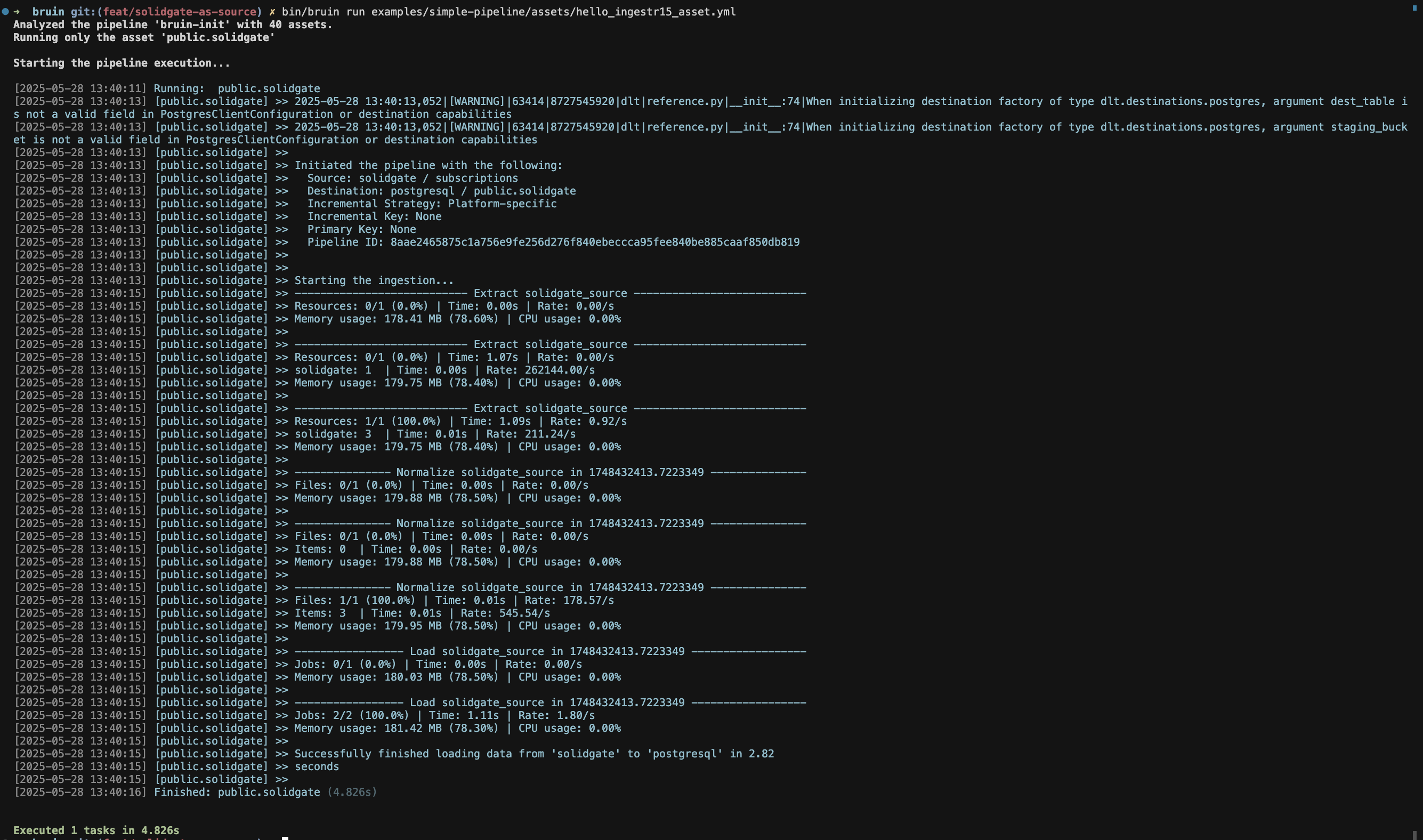Solidgate
Solidgate is a one-stop payment processing platform that ensures seamless online purchases and streamlined payment infrastructure.
ingestr supports Solidgate as a source.
Bruin supports Solidgate as a source for Ingestr assets, and you can use it to ingest data from Solidgate into your data warehouse.
In order to set up Solidgate connection, you need to add a configuration item in the .bruin.yml file and in asset file. You need public_key and secret_key . For details on how to obtain these credentials, please refer here.
Follow the steps below to correctly set up Solidgate as a data source and run ingestion.
Step 1: Add a connection to .bruin.yml file
To connect to Solidgate, you need to add a configuration item to the connections section of the .bruin.yml file. This configuration must comply with the following schema:
connections:
solidgate:
- name: "solidgate"
secret_key: "api_sk_test"
public_key: "api_pk_test"public_key: The public API key used to identify the account.secret_key: The secret API key used to authenticate requests to the Solidgate API.
Step 2: Create an asset file for data ingestion
To ingest data from Solidgate, you need to create an asset configuration file. This file defines the data flow from the source to the destination. Create a YAML file (e.g., solidgate_ingestion.yml) inside the assets folder and add the following content:
name: public.solidgate
type: ingestr
connection: postgres
parameters:
source_connection: solidgate
source_table: 'subscriptions'
destination: postgresname: The name of the asset.type: Specifies the type of the asset. Set this to ingestr to use the ingestr data pipeline.connection: This is the destination connection, which defines where the data should be stored. For example: "postgres" indicates that the ingested data will be stored in a PostgreSQL database.source_connection: The name of the Solidgate connection defined in .bruin.yml.source_table: The name of the data table in Solidgate you want to ingest. Available tables:
Table PK Inc Key Inc Strategy Details subscriptions id updated_at merge Provides a comprehensive view of customer subscriptions, including subscription IDs, statuses, and key timestamps such as creation, update, and expiration dates apm_orders order_id updated_at merge Provides essential information for anti-fraud purposes, including order IDs, transaction statuses, amounts, currencies, and payment methods, along with crucial customer details such as email addresses card_orders order_id updated_at merge Provides detailed information on orders processed via card payments, including transaction data, payment status, and customer details financial_entries id created_at merge Provides a detailed transaction-level breakdown of financial records
Step 3: Run asset to ingest data
bruin run assets/Solidgate_ingestion.ymlAs a result of this command, Bruin will ingest data from the given Solidgate table into your Postgres database.
